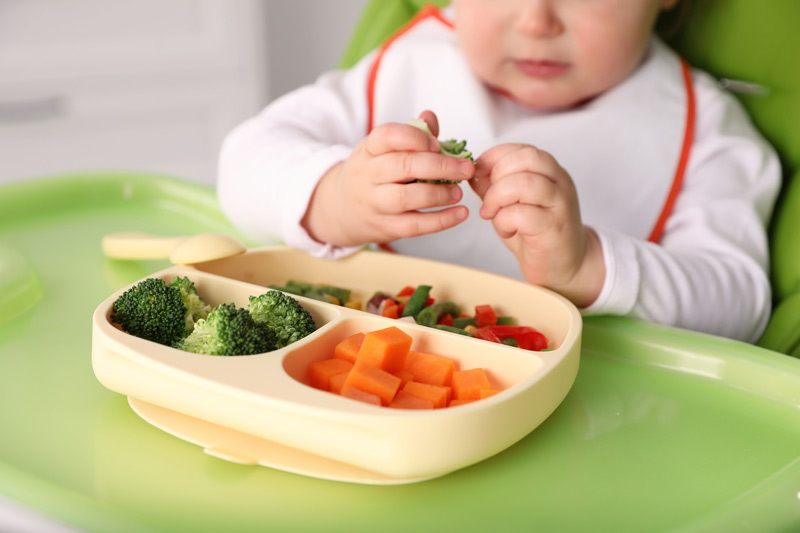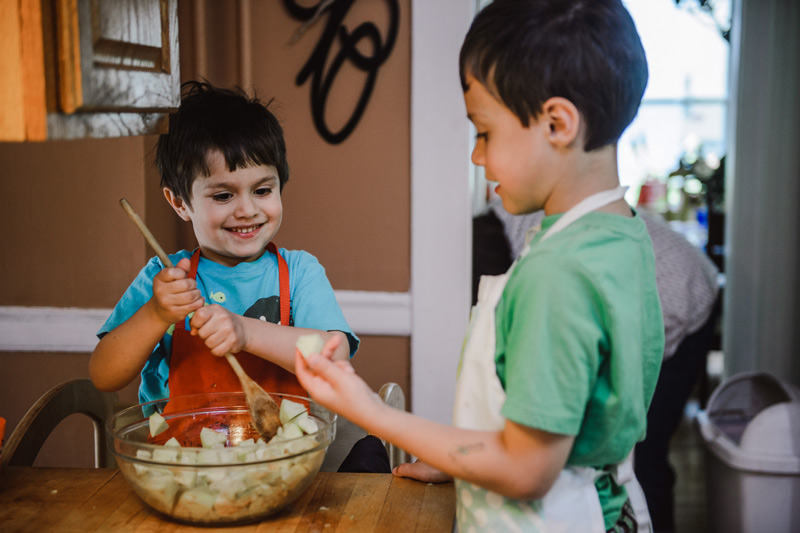
I was the greatest parent in history – before I actually became one. Everything about parenting is easy in theory and so much harder in practice. For example, I swore that I would NEVER EVER be that mom fixing multiple meals each night just to please all the members of my family. We’d abide by my parents’ time-honored rule of “get what you get and don’t get upset.”
When my oldest son was first born, things seemed to be going swimmingly – at least in the meals department. The kid was hungry and so excited about food that he was willing to try everything. That is, until he wasn’t.
My son is autistic. As he gets older and his brain develops more, he leans more on his “safe foods.” Things that didn’t matter to him as a baby first encountering the world are suddenly totally off limits because of texture, color, or even logic: “This is not food. No one wants a mini cupcake.” (I wholeheartedly agree with him there).
Neither man nor adorable seven-year-olds can live on fig bars and sun butter alone, so I’ve been hard at work for the last three years to slowly get my son to expand his palette. A few tips from various parenting sources have worked well for us: including him in meal prep, considering a sniff or a touch with the lips to be “a bite,” and repeatedly offering non-preferred foods to build familiarity. But the two biggest factors in getting him to eat have actually come from Jewish tradition.
 When kids are involved in meal prep, they're more likely to try what's set out for dinner.
When kids are involved in meal prep, they're more likely to try what's set out for dinner.
First, my child LOVES Jewish holidays. And what’s a huge part of our people’s tradition? Food! Taking a cue from our history, I’ve started to lean on holidays to introduce new-to-him foods. Tu B’Shevat is coming up and we’re going to put together a seven-species-inspired “snack plate,” including a special grocery shopping trip where he and his sibling take charge. My kids have a special bond with our rabbi and her family, and it’s been a blessing that, for some reason, both of them will try anything that comes from her kitchen. They’ve eaten salmon, roasted chicken, zucchini soup, even rice and beans – something my seven-year-old swears is “so yucky” when I offer it.
While holidays do blessedly offer opportunities to expand his palette and get at least a day’s worth of variety in his diet, the victory is short-lived and we usually return to “I don’t like these things.” And honestly, that’s fine – the poor kid is off his routine on holidays and food is one area where he has some control.
Judaism has offered another tradition though that has made a lasting impact and introduced foods that miraculously end up in the “safe foods” rotation: asking questions. Jewish tradition is full of questions – from Abraham’s “spirited” conversations (and confrontations) with God, to the questions built in to the Passover seder. Being curious is itself a Jewish value (sakranut).
With both of my children, I’ve leaned into their natural curiosity, experimentation, and exploration during meal time. “What’s this?” my son usually asks when I put an unfamiliar food on his plate. Instead of just offering a pat, “Broccoli rabe, try it,” now I’ll give him the name and ask, “What do you notice about it?” After he tells me, I’ll usually pick up the food item and offer my own observation: “Ooh, it smells earthy, like our garden. What do you think it smells like?” This usually leads to a cautious sniff and a bit more conversation. His younger sibling, a skilled conversationalist at six years old, often jumps in with some observations and encouragement as well: “Ooh, it looks like that food we saw in the video game we played today! That’s so exciting!” I’ll respond, before continuing, “I wonder what this feels like on my lips... Do you think this might be crunchy? ... I’m curious about how it tastes.”
I’ll model each step, smelling and tasting the food as we go along. Does it always work? No, especially in the case of the broccoli rabe – but it often leads him to revisit that food later on: “Mama, can we get that thing again? The broccoli thing?” And every time, I will say, “sure.” This year we’ve added both peas and carrots to his diet on a consistent basis. It’s a small change but a huge victory. Tonight we’re going for some serious sakranut, that Jewish value of curiosity, as we examine what kind of crunch a radish makes when we bite into it, and whether it tastes good with butter (his favorite condiment).
About the Author
Alli Thresher is PJ Library’s Director of Digital Content. When they’re not managing the PJ Library blog or producing podcasts for PJ Library Presents, Alli enjoys making art and trying new foods with their children, Vincent and Theo.
January 11, 2024